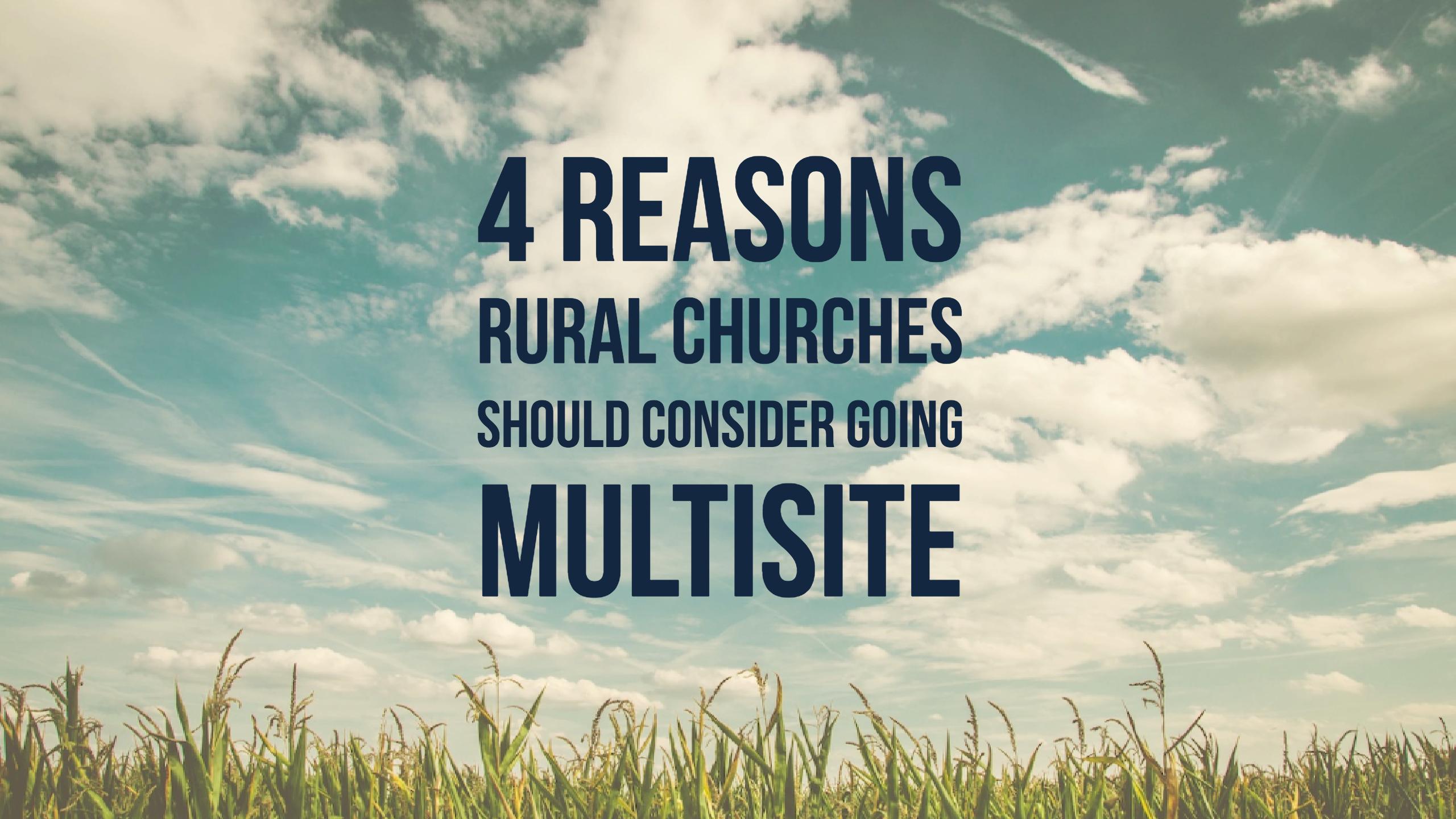There are lots of multisite churches in America today, and they are predominately located in cities. I think smaller, rural churches need to consider going multisite as well. Thom Rainer recently wrote, “Multisite used to be something only large churches tried. Now, smaller churches are getting in on the strategy.” Here are four reasons why adding an additional campus needs to be on your radar as an option for your growth needs.

- There is a need for the people in the next community over to be reached with the gospel. Whether we like it or not, our church will only reach people in a certain proximity. Sure, we can point to that family that is driving from 45 minutes away to attend our services, but they are usually the exception. They are usually not the ones who are inviting their neighbors to make the drive and check out our ministry. I believe people who are far from God will not drive over 15-20 minutes to attend a church with any regularity (most of our regulars won’t drive that far either). With this in mind, there is a need to take the ministry of the Gospel to the surrounding communities where our people are driving from in order to help them invite their neighbors, friends and co-workers to church. If the community is large enough to have its own elementary school, then it is large enough to handle an effective ministry in the town. The elementary school shows there are enough young families with children to warrant a ministry geared to reach them.
- Launching a second campus doesn’t have to be costly. There are ministries out there that are dropping $8 million on each campus they launch. This does not have to be the case. Being creative in a small community can enable a ministry to start a campus with very little money invested. There are usually buildings around that can be used, and the start-up costs are mostly in the renovations. We have launched sites in a True Value Hardware store, an American Legion building, and a church building that had been closed down. For under $100,000, a new location can be launched, and this would include the additional staff expenses for the first year. Almost immediately, new people in the area will be invited and reached to begin financially supporting the ministry.
- Launching a second campus is just like starting an additional service, except the service is held in a location 25-30 minutes down the road. When 80% of the chairs in your auditorium are taken, you are perceived as full to any new person who walks in your doors. As you watch your seats fill up, you will want to begin talking about your next move. One of those options is to start a second service. If you are from a small town like I am (1,400 people and a stoplight), you begin to realize people are driving over 15-20 minutes to get to church. Learning where your people are coming from will help you identify where you could potentially start a second campus. We had around fifty people who were driving from a town about 25 minutes away called Hallstead. Hallstead does not have a stoplight but does have 1,100 people and an elementary school. We sent those fifty people to start a Bridgewater site inside an American Legion building in their town. We said that we were just starting a fourth service, and it was meeting in a different location. They preach the same sermon, sing the same song set, and are named Bridgewater just like we are. We are one church meeting in many locations. We now have done this four times and have five sites with ten services on a Sunday morning. We are committed to reaching communities for Jesus by starting additional services this way all over our geographic area, and many of your ministries could do this as well.
- Starting a second campus will offer twice as many of your people an opportunity to use their gifts and abilities in serving ministries. I realize this is a double-edged sword. On the one hand, there will be many ministry roles that need to be filled once you start a campus in the next town. The flip side of this is that there will be many opportunities for people who are currently standing on the sidelines of ministry to get involved! We have found that if people have a role or responsibility on Sunday, there is a greater chance they will attend regularly. We do not struggle with a surplus of people who desire to serve. I don’t know any ministry that has this problem. But, we have found that when ministry opportunities are available and when we ask people to step up and take on a larger responsibility, they will. When we ask some who are helpers in children’s ministry to become teachers or classroom leaders, we see them stepping up and taking on the responsibility. We ask each person in a ministry at Bridgewater, whether paid or unpaid, to be working to find their replacement even before they need one. This allows us to have someone available to serve when we launch another campus.
There are many reasons why I believe smaller, rural churches need to consider going multisite. It has been a growth engine at Bridgewater and has allowed us to see God reach far past our community and into several additional communities around us.
Brett Bixby is the Executive Pastor at Bridgewater Church. They have 5 campuses spread across Northeastern PA and the Southern Tier of NY. He has been a pastor for 20 years and has been at Bridgewater for the last 8 years. He is married to Nicole, and they have 5 children.





Kyle
With multisite campuses, do you have a plan to make the campuses autonomous churches at some point?
tds0249
Hopefully Brett will weigh in with his opinion. As far as the church I serve, we have no plans to do that. Our plan is to keep opening campuses in the underserved rural communities around us. Thanks for the question.
Crawford kirkwood
Very intresting, wondering if it would work in the uk